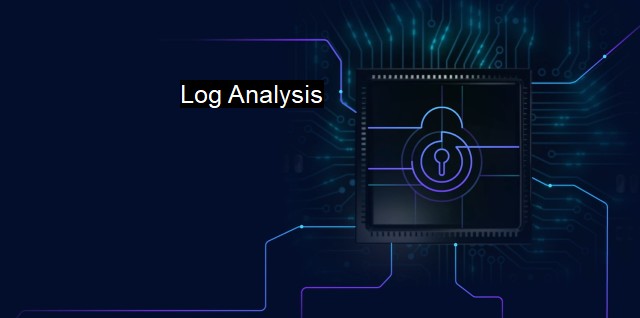What are Log Analysis?
Log Analysis in Cybersecurity and Antivirus: An Essential Tool for Identifying Anomalies and Patterns
Log Analysis is essentially the process of evaluating the recorded data from servers, networks, and systems to make sense of transactions, discover usage trends, track system functioning, troubleshoot problems, and comprehend how network security is breached. Log Analysis serves as the backbone to detect potential threats or intrusions and take preventive measures.Logs are event files that are self-generated by systems to record their processes. Each time an activity occurs in a system, an event log is run to record information about the instance. These logs could include data about network access, application behaviour, user actions, and system changes on a server, application, or network security device. Log analysis is then used to examine these logs to track the activities taking place within an organization’s IT environment.
Through Log Analysis, cybersecurity teams can examine when a potentially hazardous file was downloaded, when security systems were breached, or establish the exact sequence of activities that took place leading to a system failure. Such information is extremely useful to make informed security decisions such as blacklisting a frequent suspicious IP address or setting up firewalls for specific types of traffic.
Typically, Log Analysis involves three steps – collection, normalization, and interpretation. In collection, logs are gathered with tools equipped to catch logs from various sources such as firewalls, servers, routers, etc. It's crucial to ensure that not a single log slips through the cracks because an unnoticed log could contain indications for suspicious activity potentially resulting in a data breach.
In the normalization phase, the logs collected are translated into a common interpretable format. Since different systems may generate logs in varying formats, having it in a consistent format facilitates easier and effective analysis.
The third phase, interpretation, is where the critical part of analyzing takes place. Here, the logs are examined by a combination of human ingenuity and automated algorithms that scan for unusual activities. If something out-of-place is found, regardless of how trivial, it is closely examined since trivial deviations too may be signs of potential threats.
Proactivity can mean the difference between a minor hiccup and a major catastrophe. Antivirus software and cybersecurity tools leverage Log Analysis to continuously monitor the computer system and network for suspicious activities. By using this comprehensive information, they can proactively detect and block malware activities even before they inflict damage.
Log Analysis can play a crucial role in post-mortem historical analysis of security incidents. During such incidents, system logs can provide insights into how the breach happened, which sectors of the network were affected, at what times did the intrusion occur, and how various systems responded to the intrusion. This containment analysis coupled with remediation plans forms a comprehensive approach towards institutional security.
Log Analysis, being a common practice often faces challenges in large enterprise environments due to the sheer volume of data. To address this, organizations use security information and event management (SIEM) systems. SIEM consolidates the log data generated across the different sectors of an enterprise network, providing a unified view, thus simplifying log analysis.
Log Analysis in cybersecurity is a predominantly reliable tool that not only provides an analysis of events taking place but also helps anticipate any possible security threats. It's an 'ounce of prevention' that helps organizations ensure their systems remain seamless and secure from potential threats. From supporting an antivirus program in detecting malicious activity to offering insights to cybersecurity experts for devising robust security strategies, Log Analysis form an integral part in creating and maintaining a secure IT environment.

Log Analysis FAQs
What is log analysis?
Log analysis is the process of examining log files to gather insights and identify patterns and anomalies in system activities. In the context of cybersecurity and antivirus, log analysis helps identify suspicious behavior or activity on a network or system.Why is log analysis important in cybersecurity and antivirus?
Log analysis is critical in identifying potential security threats and vulnerabilities in a system or network. It can help detect unauthorized access attempts, malware infections, and other suspicious activity that could compromise the security and integrity of the system.What types of logs are typically analyzed in cybersecurity and antivirus?
In cybersecurity and antivirus, various types of logs are analyzed, including system logs, application logs, network logs, and security logs. System logs include information on system events such as logons, logoffs, and system errors. Application logs contain data related to application usage and performance. Network logs provide information on network traffic, while security logs contain data on security events such as failed logins, access attempts, and malware detections.How is log analysis typically performed in cybersecurity and antivirus?
Log analysis is typically performed using specialized tools designed to parse and analyze log files. These tools can help identify anomalies, patterns, and potential threats in log data. Analysts may also use machine learning and artificial intelligence techniques to detect and respond to threats in real-time.| | A | | | B | | | C | | | D | | | E | | | F | | | G | | | H | | | I | | | J | | | K | | | L | | | M | |
| | N | | | O | | | P | | | Q | | | R | | | S | | | T | | | U | | | V | | | W | | | X | | | Y | | | Z | |
| | 1 | | | 2 | | | 3 | | | 4 | | | 7 | | | 8 | | |||||||